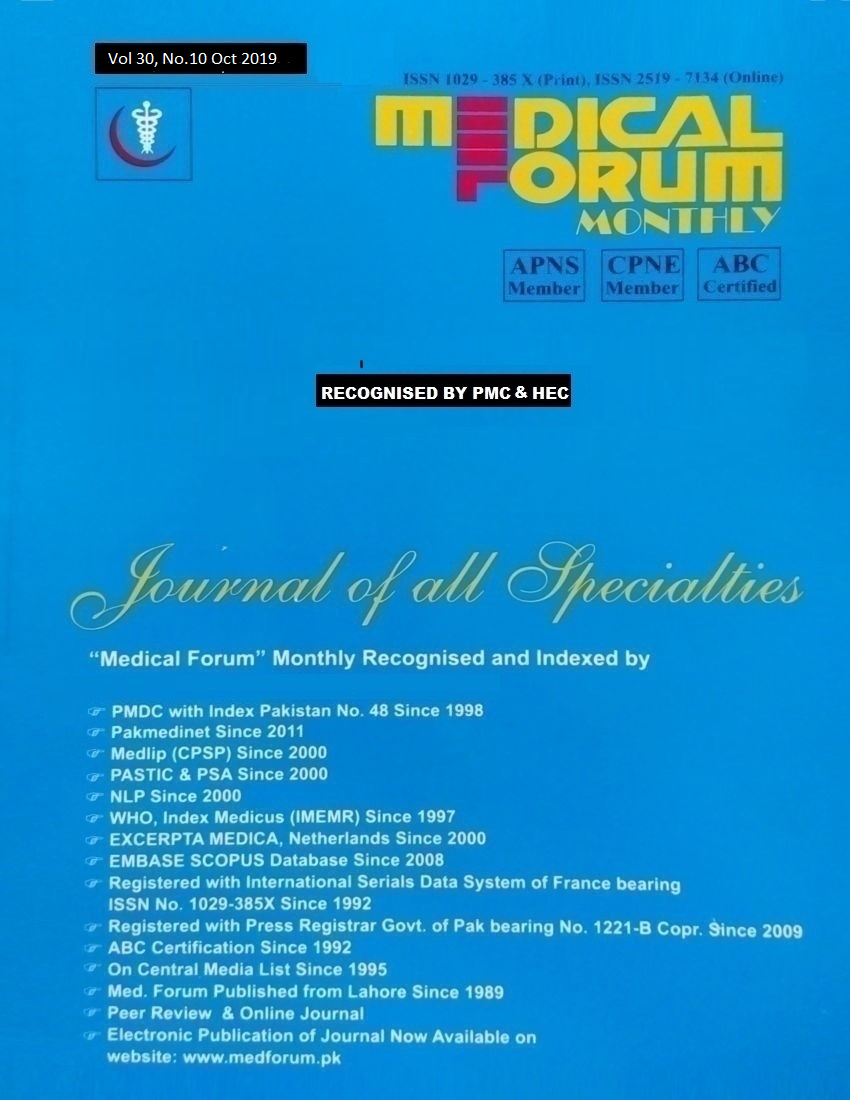
22. Ventral Hernia Repair: Compare the Outcomes of Onlay Versus Sublay Mesh Procedure
Amna Shahab1, Muhammad Aqil Razzaq2 and Muhammad Tanvir Iqbal3
ABSTRACT
Objective: To examine the outcomes of onlay mesh technique and sublay mesh technique in patients undergoing ventral hernia repair and compare the findings between both procedures.
Study Design: Randomized control study.
Place and Duration of Study: This study was conducted at the Department of General Surgery, CMH Lahore from August 2017 to July 2018.
Methods: One hundred and forty patients of both genders having ages 18 to 70 years who were undergoing ventral hernia repair were included. Patients were equally divided into two groups Group A and Group B. Group A patients received onlay mesh technique and Group B received sublay technique. Outcomes such as post-operative pain, wound infection, seroma formation and hospital stay were recorded and the results compared between both groups. Results: There were 39 (55.71%) and 37 (52.86%) female patients in Group A and B respectively. Paraumbilical hernia was the commonest type between both groups. There was significant difference in terms of post-operative pain 5.23+1.54 vs 3.01+1.01 (P-value <0.05), wound infection found in 11 (15.71%) vs 5 (7.14%) patients in both groups. 6 (8.57%) patients in Group A and 2 (2.86%) patients in Group B had seroma formation (p=<0.05). Mean Hospital stay in days was high in Group A patients compared to Group B 4.01+1.95 vs 2.01+0.65 (p=<0.05). Conclusion: Sublay mesh technique for ventral hernia repair was safe and effective with very low rate of complications as compared to onlay mesh procedure.
Key Words: Ventral Hernia Repair, Onlay Mesh Technique, Sublay Mesh Technique, Outcomes
Citation of article: Shahab A, Razzaq MA, Iqbal MT. Ventral Hernia Repair: Compare the Outcomes of Onlay Versus Sublay Mesh Procedure. Med Forum 2019;30(10): 99-101.
